How to choose a heater for an apartment and a summer residence
Winter in our country sometimes throws up surprises in the form of abnormal cold weather. Yes, such that even a normally working central heating cannot cope and it becomes cold in the apartment. And in some cities, it does not cope even with relatively light frosts. At dachas, the situation is usually different - there you need to "catch up" with a comfortable temperature during your stay. In any case, you can't do without a heater. About what they are, how to choose, how to decide which heater is better, and let's talk further.
The content of the article
Types of heaters
In apartments, heaters are most often used as an additional source of heat at a time when the main heating cannot cope and the room is chilly. At summer cottages, heaters are needed most often in the autumn-spring period, but there is rarely another source of heat, so the approach when choosing is a little different.
There are generally four types of heaters:
- fan heaters;
- oil radiators;
- electric convectors;
- infrared emitters.
Heaters for apartments and cottages must meet several requirements. First, they must be safe. This is perhaps the main selection criterion, especially if the family has small children. One of the key safety points is the availability of overheating protection - the equipment should automatically shut down when a critical temperature is reached. Secondly, the heater must be efficient and it is highly desirable that it has the function of maintaining a given temperature regime. In addition to being convenient, it also saves electricity - the heater turns on and off, and does not work all the time. When deciding which heater is best for you, these points should be monitored. They are really important. From these points of view, as well as their efficiency, we will consider all types of heaters.
Fan heaters
Electric fan heaters. This appliance has a heating element and a fan. The fan drives air through the heating element, it heats up and carries heat into the room.
Advantages and disadvantages
The advantage of this type of heater is an almost instant start. After switching on, less than a minute passes and it starts to "drive" the already warm air. The second positive point is small size and weight, hence high mobility. And the third plus is the low price. If you decide which heater is better to choose for quick heating of air in a small room, the fan heater is perhaps out of competition. These devices have quite serious disadvantages:
- They create a constant noise during operation - the fan is running.
- If the heating element is a coil, then oxygen is burned out and there is a smell of burnt dust. Other models with heating elements and ceramic plates are better in this regard, but they do not heat the air so quickly - their temperature is 4 times lower (for the spiral 800 °, for the rest - about 200 ° C).
- The air is dry. To neutralize this effect, there are models with ionizers and humidifiers, but they no longer belong to the class of inexpensive.
Despite all these disadvantages, if you need to quickly warm up the air (you will warm up the walls in this way for a very long time) there is no better way out.
Types and features
There are fan heaters in different designs:
- tabletop - very compact, low power, suitable for local heating;
- floor-mounted - larger, often look like a column, they can have a moving part, spreading hot air throughout the room;
- wall-mounted - more expensive models, often have a control panel;
- ceiling - efficient installations with a fairly large set of service functions.
| Name | A type | Power consumption | Heating power | Heating element type / their quantity | Number of operating modes / additional functions | Price |
|---|---|---|---|---|---|---|
| Polaris PCDH 2515 | Desktop | 1500 watts | 1.0 / 1.5 kW | ceramic / 1 piece | 3 | 13$ |
| Scarlett SC - FH53K06 | Desktop | 1800 watts | 0.8 / 1.6 kW | ceramic / 1 piece | 3 / thermostat, rotation, overheating shutdown | 17$ |
| De Longhi HVA3220 | Desktop | 2000 watts | 1.0 / 2.0 kW | Heating element / 1 pc | 2 / ventilation without heating | 28$ |
| VITEK VT-1750 BK | Floor standing vertical | 2000 watts | 1.0 / 2.0 kW | ceramic / 1 piece | 3 / thermostat | 24$ |
| Supra TVS-18РW | Floor standing vertical | 2000 watts | 1.3 / 2.0 kW | ceramic / 1 piece | electronic control, rotation, temperature control, economy mode | 83$ |
| Tefal SE9040F0 | Floor standing vertical | 2000 watts | 1.0 / 2.0 kW | ceramic / 1 piece | 2 / electronic control, rotation, off timer, remote control | 140$ |
| Scarlett SC - FH53006 | Desktop | 2000 watts | 1.0 / 2.0 kW | spiral | 3 / ventilation without heating, shutdown when overheating | 13$ |
| Electrolux EFH / W - 7020 | Wall | 2000 watts | 1.0 / 2.0 kW | ceramic / 1 piece | 3 / electronic control, temperature control, for wet rooms | 65$ |
| Polaris PCWH 2074D | Wall | 2000 watts | 1.0 / 2.0 kW | ceramic / 1 piece | 3 / electronic control, shutdown timer, smooth tamper control | 49$ |
| Timberk TFH W200.NN | Wall | 2000 watts | 1.0 / 2.0 kW | ceramic / 1 piece | 3 / remote control, overheating protection | 42$ |
As you can see, there are different fan heaters, for different needs and for every wallet. In this segment, there is a very substantial difference in price between famous brands and less well-known ones, and the choice is very large. Moreover, there are even different stylistic solutions - from classics to hi-tech and other newfangled trends.
Convectors
Electric convectors have a principle of operation similar to fan heaters - air passes through the heating element, heats up and the difference in heat throughout the room. The difference is that the movement of air in convectors occurs due to the natural process of convection - the property of warm air to rise upward and fans, in principle, are not needed for its movement. But the movement of air in such heaters is slow, and a cold room will take a long time to warm up. To correct this drawback, fans are also built into the convectors, which, if necessary, activate heating. Nevertheless, the main difference between convectors and fan heaters is that they can operate without a fan, that is, completely silent. At night, a very important quality.
Types of heating elements and thermostats
The heating element in convectors can be of different types:
- The well-known dry fuel cells are a proven option, not very expensive. Aluminum plates are attached to the heating element tube - to improve heat transfer.
- Needle - inexpensive, but has a short service life. Heats up almost instantly, but burns out very quickly.
- Monolithic is the most expensive, but also the most durable. Its ribs are part of the body; when heated, they expand proportionally with the body, which extends the service life.
If we talk about which type of convector is better, then definitely with a monolithic heating element. Although it costs a lot, it will serve for a long time.
Any electric convector has a thermostat. They are thermostats of two types - mechanical and electronic. Mechanical ones are much cheaper, but they have a higher power consumption, they have a solid error in maintaining the temperature, they click during operation, which can be very annoying. There are also very simple mechanical thermostats. They do not maintain the temperature, but have two (sometimes more) operating modes at different power levels. Switched manually - usually by turning the knob. Convector heaters of this type are the cheapest.
Electronic ones are accurate, silent, and require very little electricity. In addition, these models can be controlled from the remote control.
Design features
By design, electric convectors are mainly hung on the wall - it can be under the window instead of a traditional radiator, or it can be in the place where you need it. Most of the models can be installed on legs. They may come with a heater, or they may be sold separately.
Electric convectors are shaped like parallelepipeds with different proportions. There are low and long ones - a good option for panoramic windows, if high and narrow - they can be placed in a wall, there are such sizes as heating radiators - they are traditionally placed under windows - to cut off cold air from the windows.
There are waterproof cases (IP24 protection against splashes), which allows them to be used for heating bathrooms.
| Name | Power consumption | Heated area | Thermostat type | Heating element type | Installation method | Price |
|---|---|---|---|---|---|---|
| Electrolux ECH / AG 500 PE | 500 watts | 5 sq. m | electronic, with LED display, shutdown timer | monolithic | wall-mounted, low (plinth version) | 93$ |
| Electrolux ECH / AG 1000 MF | 1000 watts | 5-10 sq. m | mechanical, two power modes, air purification | wall-mounted / on legs | 53$ | |
| Electrolux ECH / AG2 - 1000 EF | 1000 watts | 10-15 sq.m | electronic, thermal protection, air filter | ceramic monolithic | wall-mounted / on legs | 70$ |
| Aeg WKL 503 S | 500 watts | 5 sq. m | electronic, overheating protection | Heating element made of stainless steel with copper heat exchanger | wall-mounted, can be used in the bathroom (splash-proof) | 93$ |
| Aeg WKL 1503 S S | 1500 watts | up to 15 sq. m | mechanical, overheating protection | Heating element made of stainless steel with copper heat exchanger | wall-mounted, can be used in the bathroom (splash-proof) | 117$ |
| Aeg WKL 3003 S | 3000 watts | up to 30 sq. m | mechanical, overheating protection | Heating element made of stainless steel with copper heat exchanger | wall-mounted, can be used in the bathroom (splash-proof) | 187$ |
| Ballu BEC / EZER-1000 | 1000 watts | up to 15 sq. m. | electronic, roll-over shutdown, overheating protection | wall, floor | 50$ | |
| Ballu BEC / EM-1500 | 1500 watts | up to 20 sq. m | mechanical | monolithic | wall / floor | 44$ |
| Ballu BEC / EVE - 2000 | 2000 watts | up to 25 sq. m | electronic, LED display, ionizer, timer | monolithic | wall / floor | 80 $ |
| Hyundai H-HV5-10-UI609 | 1000 watts | up to 16 sq. m | mechanical, two powers | needle | wall / floor | 44 $ |
| Hyundai H-HV1-10-UI562 | 1000 watts | up to 13 sq. m | mechanical, temperature maintenance | monolithic | wall / floor | 65$ |
| Hyundai H-HV3-10-UI568 | 1000 watts | up to 14 sq. m | electronic, LCD display, humidifier | monolithic | wall / floor | 80$ |
This type of heater can have the following useful options:
- Overheating shutdown. This feature is highly desirable if you plan to leave equipment running unattended.
- Off when deflected. Disables the device if dropped.
- Ionizer and humidifier. Returns the indoor atmosphere to normal.
- Air filter. During convection, dust is constantly suspended. To reduce it in the air, filters are installed in the convectors.
If we talk about which heater is better in this group, then of course - with a monolithic heater and an electronic thermostat. These models ensure the maintenance of the set temperature with high accuracy.
Oil radiators
This type of heater has been known for a long time. It has a sealed housing filled with technical oil. A heating element is immersed in the oil - heating element. There can be several of them, they are usually turned on / off manually, by turning the knob / switch.
Advantages and disadvantages
These heaters are good for both home and summer cottages. They are very reliable, rarely break down, have a safe design and relatively low prices.
Many people prefer this type of heaters, as they spread soft heat, even near them there is no discomfort.Such heaters are preferred by families with children - the design is safe, the case heats up to no more than 60 ° C, which is unpleasant to touch, but absolutely safe. What is not very good is its large mass, so if it falls on a child, it can injure him. The pluses include quiet operation.
The main disadvantage of oil radiators is the low speed of heating the room. While the oil heats up, the case warms up, a considerable period of time passes. Only then does the air begin to heat up. And then the process goes slowly - only due to natural convection, which usually leads to the fact that it is warm near the heater, a little further - cold.
Design features
Oil radiators are usually made in floor-standing design; wall-mounted models are much less common. The mass of these devices is quite solid, so they have wheels for easy movement.
External design can be of three types. Most often there are radiators, somewhat reminiscent of old cast-iron batteries - an accordion. They also consist of sections welded together. The second type is one, two or three almost flat panels installed in parallel. Today, this type of oil radiator is rare, but it can be hung on the wall without legs.
Another option for wall-mounted oil radiators is very similar in shape to modern aluminum radiators. They can also be used as wall-mounted or stand on legs with wheels.
| Name | Power consumption / heating area | Number of heating modes | Additional functions | Mounting type | overheat protection | Price |
|---|---|---|---|---|---|---|
| Electrolux EOH / M-5157 | 2000 W / 10 m2 | 3 | Roll-over shutdown | floor | there is | 60$ |
| Electrolux EOH M-6221 620х475 | 2000 W / 27 m2 | 3 | floor | there is | 65$ | |
| Scarlett SC-OH67B01-5 | 3000 W / 15 sq. m | 3 | floor | there is | 30$ | |
| Scarlett SC-OH67B01-9 | 1000 W / 25 sq. m | 3 | floor | there is | 52$ | |
| BALLU BOH / CL-07 | 1000 W / 20 m2 | 3 | floor | there is | 50$ | |
| DeLonghi TRRS 0920 | 2000 W / 60 m2 | 3 | floor | there is | 85$ | |
| Polaris PREM0715 | 2000 W / 15 m | 3 | floor | there is | 55$ | |
| VITEK VT-1704 W | 2000 W / 15 m | 2 | 2 heating elements | floor | there is | 43$ |
| LVI Yali 05 130 | 1250 W / 12.5 m | 5 | energy saving, air ionizer | wall | there is | 514$ |
| Caliber EMR - 2015 | 2000 W / 15 m2 | 3 | floor / flat | there is | 60$ |
Home and garden heaters of this type are generally simple and do not have a large set of additional functions. What is always present in a normal oil cooler is protection against overheating. This is critical for heating elements and for safety, therefore, you cannot do without this function. Occasionally, in more expensive models, a rollover shutdown function is found. This can be important if there are children in the family.
Deciding which oil heater is best is not easy at all. There are no other criteria other than adequate power and good user reviews.
Infrared heaters
Infrared heaters have appeared relatively recently and have caused a whole wave of controversy. Some argue that they are useful, others that they are harmful. It is difficult to decide which of them is right - the arguments of both sides seem convincing. Everyone, as usual, decides for himself which camp he belongs to.
How it works and what are the differences
The basis of an infrared heater is a long-wavelength emitter that generates electromagnetic waves in the same range as the sun - infrared. Such warmth is perceived by our body as more pleasant - our body emits such waves, therefore it is comfortable to be near such devices. To focus the radiation in the body of the infrared heater there is a reflector - it increases the efficiency of heating a certain area.
The main difference between this type of equipment is that it does not heat the air, but the objects at which the rays are directed. And from their warm surface the air is already heating up.If you find yourself in the range of the rays and your body will heat up. On the one hand, this is good, but on the other hand, it is not very: it is warm in the zone of action of the rays, outside it is cold. But you can focus the heat well into the desired area. Up to the point that you can take the device outside / veranda and create an island of comfortable temperature in the cold.
In general, it is noticed that when using infrared radiation, we feel comfortable at lower temperatures - 2-3 degrees lower than when heated by any other devices. This means that less electricity is spent.
Installation methods
In this category, there are a variety of heaters, both in shape and installation method. In addition, various sources of radiation are used - tubular emitters, infrared lamps, plates, carbon paste and much more. They can be mounted on the ceiling, walls, and can stand on the floor. In general, the choice is really wide. Moreover, there are both models that can be used for high-grade heating - stationary lamps, and to create more comfortable conditions in a separate area. These are portable radiators and heaters in the form of rugs. The rugs are definitely a local device, no matter what the sellers say. They are convenient for warming your feet (there are floor mats) and some part of the room - wall. You can hang them near your work area or bed and enjoy the warmth.
| Name | Installation method | Power consumption | Heating area | Additional functions | Manufacturer | Price |
|---|---|---|---|---|---|---|
| TEPLOFON ERGNA-0,7 / 220 | wall | thermostat | 10-17 sq. m | overheat protection | Russia Teplofon | 50$ |
| TEPLOFON GLASSAR ERGN 0,4 | wall-mounted flat | 400 watts | overheat protection | Russia Teplofon | 55$ | |
| MISTER HIT THERMIK C-0,5 | wall-mounted flat | 500 watts | 7-10 sq. m. | overheat protection | Russia Mister Hit | 30$ |
| MISTER HEAT THERMIK C-1,2 | wall-mounted flat | 1200 watts | 20-25 sq. m. | overheating protection, infrared + covection | Russia Mister Hit | 40$ |
| NOIROT CAMPAVER CMEP 09 H | wall-mounted flat | 900 watts | digital control system | France | 940$ | |
| FRICO COMFORT ECV | wall cassette, above the window | 300 watts | 120$ | |||
| BALLU INFRARED FAR BIHP / F-1000 | floor, wall | 600/1000 Watt | up to 15 sq. m. | overheat protection | 45$ | |
| BALLU INFRARED FAR BIHP / F-1500 | floor, wall | 800/1500 W | up to 20 sq. m. | overheat protection | 52$ | |
| ALMAK IK-5 | ceiling | 500 watts | 5-6 sq. m. | with external thermostat | Russia | 46$ |
| ALMAK IK-16 | ceiling | 1500 watts | up to 15 sq. m. | with external thermostat | Russia | 74$ |
| PION LUX 04 | ceiling | 400 watts | 4-8 sq. m. | work indicator light | 42$ | |
| PION LUX 13 | ceiling | 1300 Wt | 13-26 sq. m. | work indicator light | 62$ | |
| MR HEAT IR-0.7 | ceiling | 700 watts | 8-10 sq. m | with external thermostat | Russia | 34$ |
It is not easier to choose which heater from this group is better. You need to focus on the tasks that he must perform. If you need to heat a specific area, the floor model or the wall model is the best option. If the heating area needs to be very small, a rug will do. To solve serious problems - as the main heating or additional, but for the whole room it is worth considering wall or ceiling options.
Please note that some models are paired with external thermostats, but they are selected separately and their price is not included in the price of the heater.
Which heater is best for the house, which one is for giving
The choice of a heater depends on the tasks that it has to perform. For example, in a country house, it is usually required to quickly heat the air to a comfortable temperature. Moreover, the device should not be heavy, small-sized and mobile - so that it would be possible to take it away for the winter without any problems. Fan heaters, convectors and infrared heaters meet these requirements. Oil oils in this case are not the best choice - they take a long time to warm up, heavy.
For an apartment and a house, any of the options described is generally suitable.Choose the one that you like more than others or the one that best solves the tasks assigned to him. For example, a family has an allergy sufferer; in this case, it is better to exclude active air movement (convection). Infrared radiators and oil radiators hardly stimulate convection.
If there are small children in the house, air parameters are very important for them - there should be normal humidity, there should be enough oxygen. To solve this problem, models with ionizers and humidifiers are suitable, and only choose the type yourself.
Convectors and infrared heaters can solve the problem of heating in general (serve as the main source of heat). You can create a system of oil heaters, but it will turn out to be inert, it will be difficult to regulate the temperature. Fan heaters are not suitable for permanent use, although there are models for long-term operation - with monolithic heating elements and electronic control.

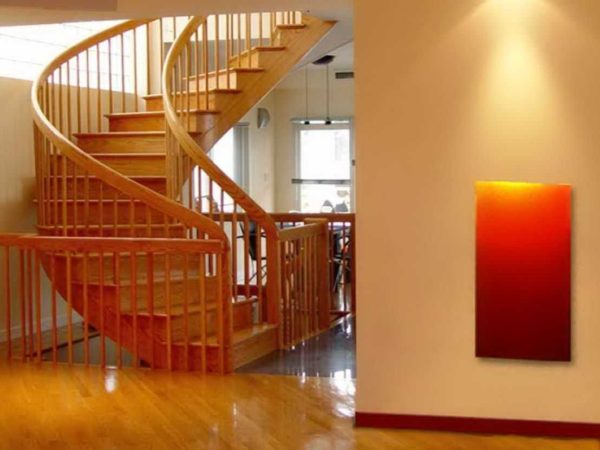
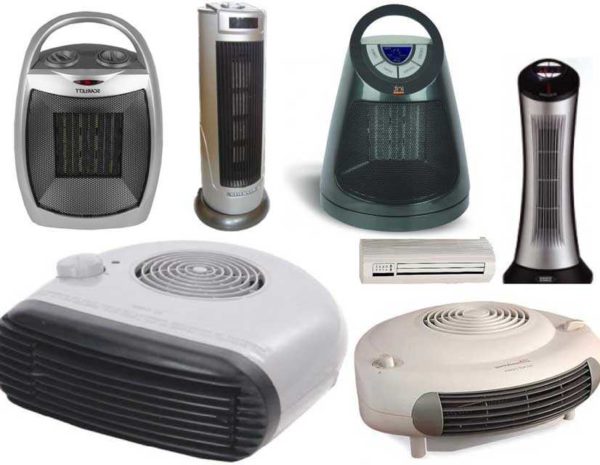
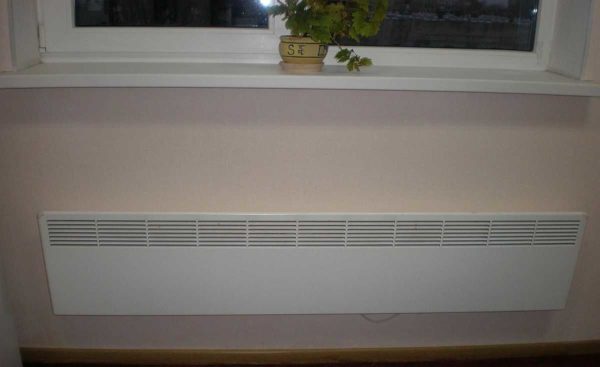
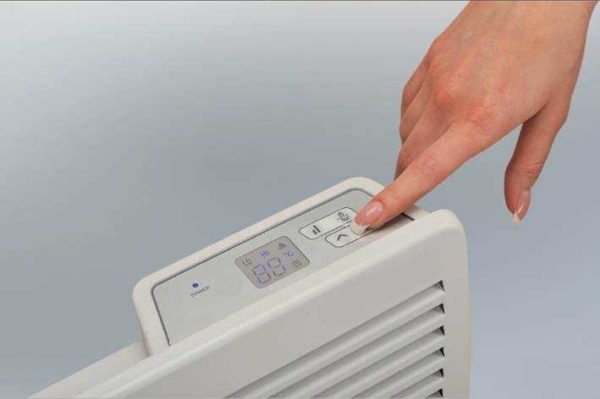
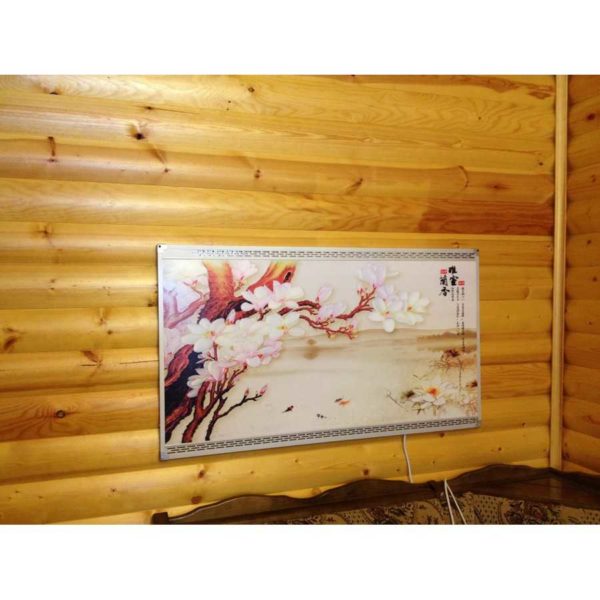
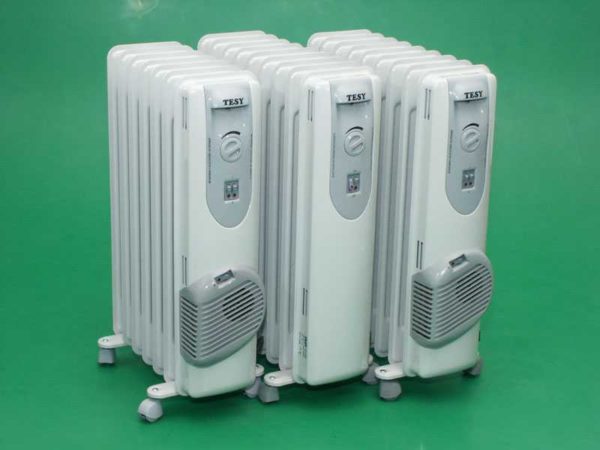
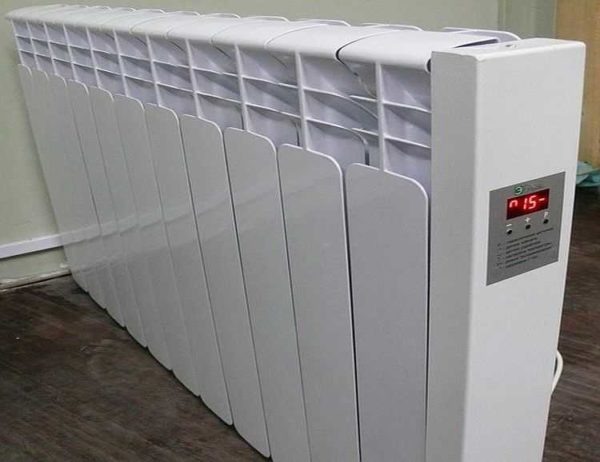
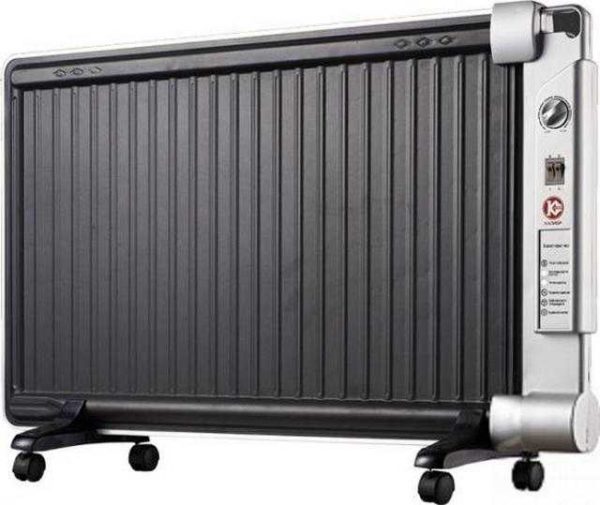
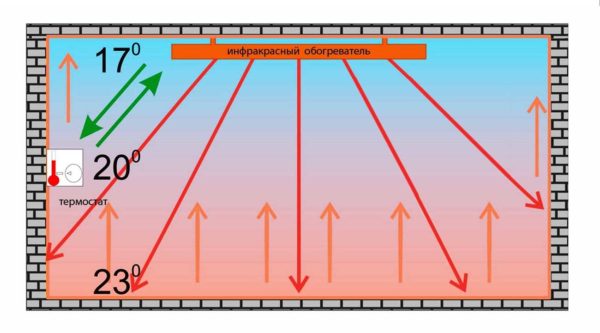
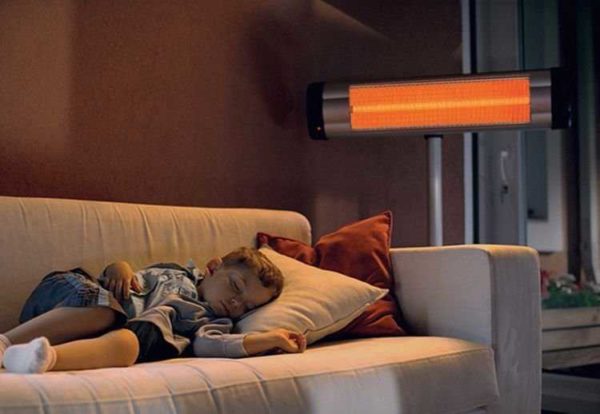
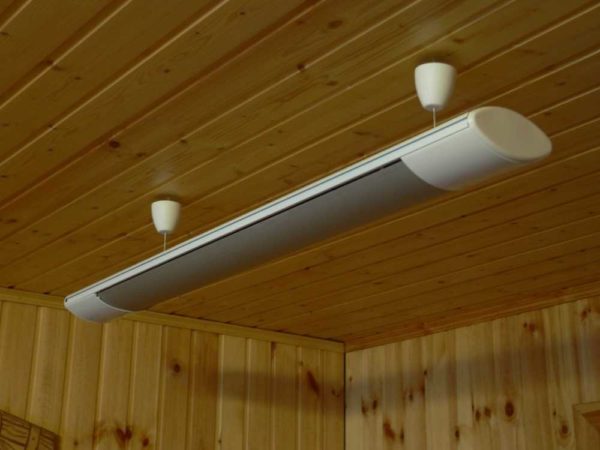
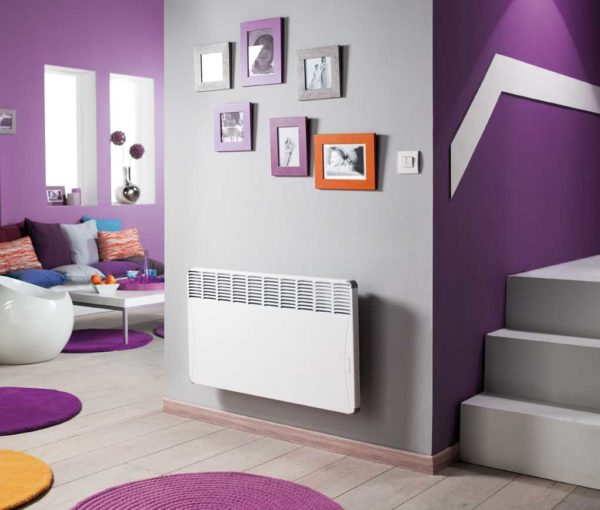
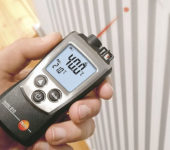
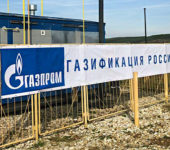
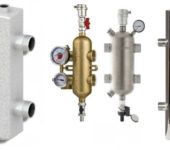
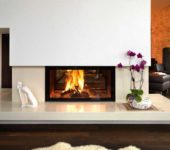
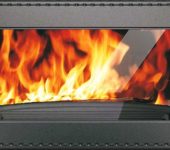





I was very pleased with the Delongy oil heater. They took him to Avito, but a new one, because I think it is risky to buy used equipment. The choice fell on him due to the fact that he quickly warms up the room (we have an area of 33 sq m). If it's already hot, you can lower the temperature. Fuses against overheating are very relevant in such devices. It is also convenient to transport it around the apartment due to rubberized wheels.
Buying used equipment is like overpaying twice. We also do our best to avoid such purchases. We try to shop only in trusted places, but in search of a heater, we were even carried to the boards. We saw a good ceiling heater ALMAC IK11 on Avito. The price did not bite at all - 3000 rubles. We were just looking for a heater for the bedroom, our room is small, so this one would fit perfectly and would not take up space. We decided to order. The seller offered boxberry cash on delivery. Upon receipt, we examined it, everything was fine, paid. Attached it to the middle of the ceiling. True, there were no mounts, I had to buy more. but this is already such, little things. It is installed easily, my husband did everything quickly. Heats up the room quickly and works silently.